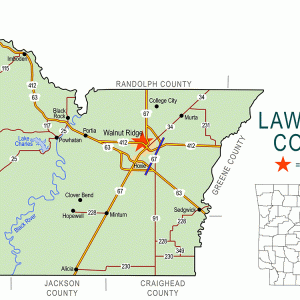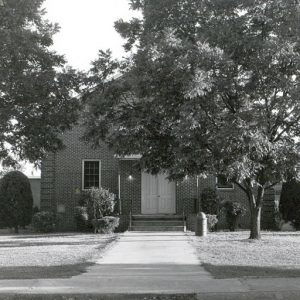calsfoundation@cals.org
College City (Lawrence County)
| Latitude and Longitude: | 36°07’31″N 090°56’21″W |
| Elevation: | 276 feet |
| Area: | 1.09 square miles (2020 Census) |
| Population: | 469 (2020 Census) |
| Incorporation Date: | September 13, 1951 |
Historical Population as per the U.S. Census:
|
1810 |
1820 |
1830 |
1840 |
1850 |
1860 |
1870 |
1880 |
1890 |
1900 |
|
– |
– |
– |
– |
– |
– |
– |
– |
– |
– |
|
1910 |
1920 |
1930 |
1940 |
1950 |
1960 |
1970 |
1980 |
1990 |
2000 |
|
– |
– |
– |
– |
– |
358 |
645 |
432 |
339 |
269 |
|
2010 |
2020 |
|
|
|
|
|
|
|
|
|
455 |
469 |
|
College City of Lawrence County consisted of the campus of Williams Baptist College (now Williams Baptist University), along with residential areas north and south of the campus. Its history as a city was shaped principally by the college, as well as by the Walnut Ridge Army Flying School that preceded the college on the property. Local residents voted to consolidate their city with neighboring Walnut Ridge (Lawrence County) in 2016.
Southern Baptist College was established in Pocahontas (Randolph County) in September 1941. Drawing upon the alumni and the resources of several defunct Baptist schools—including Maynard Academy and Jonesboro Baptist College—Hubert Ethridge (H. E.) Williams and Henry Watters assembled a faculty and enrolled forty-two students. Williams became the first president of the college. Three months later, the United States entered World War II. The school managed to stay open and to continue offering classes throughout the course of the war.
The next year, the U.S. government paid a little more than $300,000 to acquire 3,096 acres from forty-five families northeast of Walnut Ridge. On this land, the U.S. Army built an airfield to train pilots. Between October 1942 and June 1944, roughly 5,000 students were trained at the airfield. With the end of the war in 1945, the installation was decommissioned and the land put to various other uses, including the storage of military aircraft and the establishment of a public airport.
President H. E. Williams was already pursuing the possibility of purchasing some of the airfield property before the main building of Southern Baptist College was destroyed by fire on December 26, 1946. His negotiations were successful, and the college officially acquired 130 acres, including several buildings, on January 11, 1948. The relocated college was renamed Williams Baptist College in 1989 to honor the memory of its founder and first president.
During the tenth-anniversary celebrations of the college in September 1951, steps were completed to incorporate the campus and adjacent residential neighborhoods as a city. No post office was ever established in College City; the college and all residents of the city received their mail with a Walnut Ridge address. College City contracted with Walnut Ridge for fire protection and mosquito control. Water and sewer services were provided by Lawrence County Water, which draws from the Spring River. College City is within the borders of the Lawrence County School System.
As a second-class city, College City elected a mayor, a recorder/treasurer, and a four-member city council. Many—but by no means all—of the elected officials were members of the Williams Baptist College faculty, administration, or staff. Mayors have included Williams (first elected in 1961), English professor Jerry Gibbens (first elected in 1977), and history professor Kenneth Startup (first elected in 1985). The population of the city varied from census to census, reaching a high of 645 in 1970 and a low of 269 in 2000. Throughout its history, the population of College City was almost entirely white.
In May 2016, voters in both College City and Walnut Ridge voted to consolidate their two communities.
For additional information:
Lawrence County, Arkansas: 1815–2001. Paducah, KY: Turner Publishing Company, 2001.
Startup, Kenneth M. The Splendid Work: The Origins and Development of Williams Baptist College. Walnut Ridge, AR: Williams Baptist College, 1991.
Steven Teske
Butler Center for Arkansas Studies
 College City Sign
College City Sign  Lawrence County Map
Lawrence County Map  Southern Baptist College Chapel
Southern Baptist College Chapel  Williams Baptist College Fine Arts Building
Williams Baptist College Fine Arts Building 



Comments
No comments on this entry yet.